
FEBRUARY 2023 • Vol. 40 • No. 02 (ISSN 2562-0711) Themed Edition on Organizational Culture & Leadership 14 09 21 29 The Reckoning Of Lazy Leadership - Justin Reinert, Performance Accelerated Learning Is Your Culture Helping Or Hurting? - Lisa Reinhardt, The CCS Companies Why We Choose The Wrong Leaders And How We Can Fix This - Celine Floyd, Cappfinity 5 Misconceptions About Workplace Culture - Paul White, Ph.D., Appreciation at Work START BUILDING CONNECTIONS FOR AN ENDURING CORPORATE CULTURE - Joe Hart, President and CEO, Dale Carnegie Training



































































Start Building Connections For An Enduring Corporate Culture Change your perspective
Joe Hart,
Dale Carnegie Training 06 INDEX On the Cover Articles Themed Edition on Organizational Culture & Leadership Leadership Excellence FEBRUARY 2023 Vol.40 No.02 (ISSN 2562-0711) 34 Why Understanding Existing Value Systems In The Workplace Makes For A Seamless Leadership Experience Leaders should incorporate a values disclosure session into onboarding programs
David Mugun, Founder, Business Person's Mentor Limited 37 How You Can Improve Your Performance As A Boss 6 steps to follow
John Tschohl, Founder and President, Service Quality Institute 12 The World Has Changed. Your Leadership Style Must Change Too! Leaders must demonstrate flexibility in their approach to leadership
Angie Morgan Witkowski, Leadership Coach, and Keynote Speaker, Shiny Penny, LLC 18 3 Ways Anyone Can Start Removing Digital, Performance, And Organizational Barriers In The Workplace Becoming an accessibility ally!
John Samuel, CEO and Co-founder, Ablr360 23 13 Ways Leaders Are Addressing Imbalances Of Power In The Workplace From creating feedback loops to being aware of one's own biases, the list continues
-
President and CEO,
–
–
–
–
– Compiled by Brett Farmiloe, Founder/CEO, CHRO, Terkel.io
5 Misconceptions About Workplace Culture


How can you make a difference
- Paul White, Ph.D., President, Appreciation at Work
The Reckoning Of Lazy Leadership
2023 will see a continued rise in individual/employee empowerment and tumultuous cultural shifts
- Justin Reinert, Principal and Founder, Performance Accelerated Learning
Is Your Culture Helping Or Hurting?
A strong company culture provides a competitive advantage
 - Lisa Reinhardt, Senior Manager of Learning and Organizational Development, The CCS Companies
- Lisa Reinhardt, Senior Manager of Learning and Organizational Development, The CCS Companies
14 21 29
Why We Choose The Wrong Leaders And How We Can Fix This
Take the time to identify new criteria that make leaders not only effective but productive, as well
 - Celine Floyd, Director of Leadership Assessment, Cappfinity
- Celine Floyd, Director of Leadership Assessment, Cappfinity
09
INDEX Top Picks
Editorial Purpose
Our mission is to promote personal and professional development based on constructive values, sound ethics, and timeless principles.
Excellence Publications
Debbie McGrath CEO, HR.com - Publisher
Sue Kelley Director (Product, Marketing, and Research)
Babitha Balakrishnan and Deepa Damodaran
Excellence Publications Managers and Editors
Leadership Excellence Team
Babitha Balakrishnan Editor
Nataraj Ramesh Design and Layout (Digital Magazine)
Vibha Kini Magazine (Online Version)
Submissions & Correspondence
Please send any correspondence, articles, letters to the editor, and requests to reprint, republish, or excerpt articles to ePubEditors@hr.com
For customer service, or information on products and services, call 1-877-472-6648 Leadership
 Debbie Mcgrath Publisher, HR.com
Babitha Balakrishnan Editor, Leadership Excellence
Debbie Mcgrath Publisher, HR.com
Babitha Balakrishnan Editor, Leadership Excellence

Why to Build a Strong Organizational Culture Now
Everyorganization has its own culture, which encompasses core values, beliefs, vision, mission, strategic objectives, customs, and practices. Today, in order to remain competitive, employers need to reevaluate their company’s culture to reflect the new normal of virtual and hybrid work. To build an enduring culture, leaders should understand the new drivers of culture and how culture is operationalized in the new work environments.
What workplace culture should leaders prioritize this year? Where should leaders focus their attention? The February edition of Leadership Excellence includes articles that focus on organizational culture and leadership, addressing imbalances of power in the workplace, flexible leadership and much more.
Connecting with others in authentic and respectful ways is a crucial life skill and a business requisite for building a strong culture. Read Joe Hart’s (President and CEO, Dale Carnegie Training) article, Start Building Connections For An Enduring Corporate Culture, for valuable insights on the role of creating trust and changing our perspectives in building an enduring culture.
Many leaders have significant misconceptions about what creates a workplace culture and whether or not (or how) it can be changed. Dr. Paul White (President, Appreciation at Work) in his article, 5 Misconceptions About
Workplace Culture, talks about the workplace culture misconceptions and addresses what individuals within an organization can do to make a difference.
Justin Reinert, (Founder, Performance Accelerated Learning) in his article, The Reckoning Of Lazy Leadership, shares why 2023 will see a continued rise in individual/employee empowerment and tumultuous cultural shifts.
To learn about the benefits of a strong company culture, read Lisa Reinhardt’s (Senior Manager, The CCS Companies) article, Is Your Culture Helping Or Hurting?
Having an efficient leader ensures that everyone in an organization is aligned and working towards a common goal. This leaves no room for employee frustration and allows organizations to build a strong culture. Leaders should constantly focus on monitoring and managing organizational culture to support employee growth and point business growth in the right direction.
We hope you enjoy reading all the articles in this edition of Leadership Excellence and as usual, we look forward to your suggestions / feedback on our articles.
Happy Reading!
The views, information, or opinions expressed in the Excellence ePublications are solely those of the authors and do not necessarily represent those of HR.com and its employees. Under no circumstances shall HR.com or its partners or affiliates be responsible or liable for any indirect or incidental damages arising out of these opinions and content.
Disclaimer:
EDITOR’S NOTE
Subscribe now for $99 / year And get this magazine delivered to your inbox every month Become a Member Today to get it FREE! SIGN UP OR For Advertising Opportunities, email: sales@hr.com Copyright © 2023
No part of
publication may be reproduced or transmitted in any form without written
HR.com.
this
permission from the publisher. Quotations must be credited.
Excellence
is published monthly by HR.com Limited, 56 Malone Road, Jacksons Point, Ontario
1L0
Address
Write to the Editor at ePubEditors@hr.com
(ISSN 2562-0711)
L0E
Internet
: www.hr.com
In a world of unparalleled challenges (global pandemic, racial injustice, political rivalry, digital 4.0, emotional malaise), uncertainty reigns. Finding opportunity in this context requires harnessing uncertainty and harnessing starts with reliable, valid, timely, and useful information. The Excellence publications are a superb source of such information. The authors provide insights with impact that will guide thought and action.
Dave Ulrich
Rensis Likert Professor, Ross School of Business, University of MichiganPartner, The RBL Group

I have really enjoyed both reading and contributing to HR.com’s magazines over the past year. As a scholar-practitioner, it has been a wonderful outlet to share my current academic research with a broader practitioner audience, in a very timely manner. If you want to reskill and upskill your workforce, point them towards the wide array of offerings from HR.com.
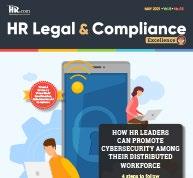
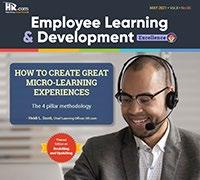

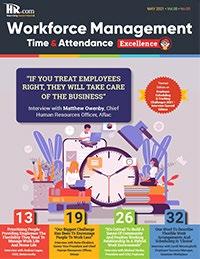
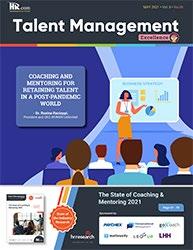
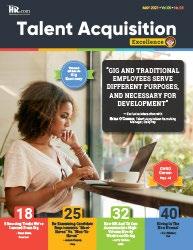
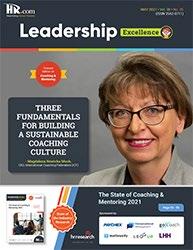
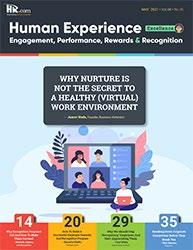 Jonathan H. Westover, Ph.D., MPA, SFHEA, AFCIPD Chair/Professor | Organizational Leadership Academic Director | Center for Social Impact Faculty Fellow | Center for the Study of Ethics Utah Valley University
Jonathan H. Westover, Ph.D., MPA, SFHEA, AFCIPD Chair/Professor | Organizational Leadership Academic Director | Center for Social Impact Faculty Fellow | Center for the Study of Ethics Utah Valley University


During the COVID pandemic, I have learned that I need a source that provides high-quality, cutting-edge, and timely information on a wide-variety of topics. HR.com’s Excellence Publications has been that source for me.
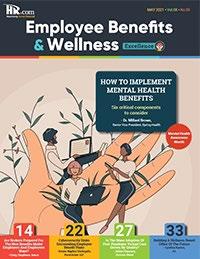
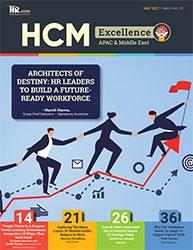
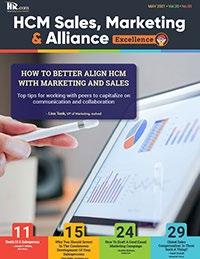

 Ryan Gottfredson, Ph.D.
Consultant/Trainer/Speaker/Coach Assistant Professor - California State U. Fullerton
Ryan Gottfredson, Ph.D.
Consultant/Trainer/Speaker/Coach Assistant Professor - California State U. Fullerton
WHY EXCELLENCE PUBLICATIONS?
We’re eager to hear your feedback on our magazines. Let us know your thoughts at ePubEditors@hr.com
Start Building Connections For An Enduring Corporate Culture
By Joe Hart, Dale Carnegie Training
Thebest parts of life and work involve relationships. Connecting with others in authentic and respectful ways is a crucial life skill and one that is required in the business for
building an enduring culture. While every relationship evolves and changes, how we connect with people and grow relationships that stand the test of time will always require our
effort and attention. Developing an enduring culture in business means making connections, creating trust, and often, changing our perspectives.

Change your perspective
Leadership Excellence presented by HR.com FEBRUARY 2023 6 Submit Your Articles COVER ARTICLE
Get Connected
Let’s begin with how we get connected and build great relationships. While we all want to build great relationships, we often fall short on a practical level. In Dale Carnegie’s “How to Win Friends and Influence People,” building and sustaining relationships are critical to everyone’s success. In “Take Command, Find Your Inner Strength, Build Enduring Relationships, and Live the Life You Want,” my co-author, Michael Crom, and I, pose a simple question: “Have you ever wondered what makes a relationship?” These five approaches can help you make connections and keep them.
● Be warm The quality of genuine warmth is
underrated. Studies show highly charismatic people demonstrate both competence and warmth. Being warm is being open and friendly, and it requires not only the right words, but the correct tone, facial expressions, and body language.
● Listen Listening well is more than simply not talking while someone else is. To listen well, we must open our minds and really hear to what is being said (without planning our next words). Asking follow-up questions for clarification and understanding is also a part of listening well.
● Find common ground Common ground (values, hobbies, interests,
professions) is where we can make connections or reconnections in relationships.
● Show genuine care
Showing genuine care goes beyond vague, general greetings and makes it clear we can speak openly about our lives. It means making space for the hard stuff as well as the good stuff.
● Give honest and sincere appreciation. Everyone craves appreciation. It affirms their value and shows they matter.
Even if we only focus on one of these areas, it is a great way to start making the connections needed to build an enduring corporate culture.

Create Trust
Once we’ve made the connection, creating trust is the next step. When we trust someone, we can be vulnerable, open, and let our defenses down with them and vice versa. Vulnerability is often seen as a weakness, but it is ultimately the key to trust. WE can’t establish real trust unless we can let our guard down. Vulnerability demonstrates our authenticity, believability, and relatability, fostering deeper connections with others as we embrace our true selves and risk how others will respond. Showing vulnerability doesn’t make us weak, but rather makes us human as we show our authentic selves to others.
Start Building Connections For An Enduring Corporate Culture
Leadership Excellence presented by HR.com FEBRUARY 2023 7 Submit Your Articles
If vulnerability and authenticity build trust, what destroys it? In many cases, we destroy trust when others share with us and we fail to keep it in confidence but rather repeat it in a way that hurts them. If we kept what they shared privately as intended, we would immediately earn their trust. Inconsistency is another enemy of trust. We can all name someone in our lives who says one thing and does another. Even if it’s unintentional, it makes it difficult to trust them. Finally, when we fail to listen and communicate well with those around us, it leads to a lack of trust. Trust once build is fragile, but it can be restored with genuine effort –honesty, admission of mistakes, supportive actions, and time.
Change Your Perspective
Making connections and building trust goes a long way in building an enduring culture, but there is a final step – changing your perspective. Dale Carnegie explained it this way, “Remember that other people may be totally wrong. But they don’t think so. . . try to understand them. Only wise, tolerant, exceptional people can even try to do that.”
As humans, we struggle with understanding other people’s perspectives because we are so invested in our own views and feel confident we see the world the ‘right’ way. When others challenge our perspective, we feel uncertain and even threatened, and we sometimes go into ‘fight’ mode.
How do we change that? How can we get to know others, change our perspectives, and deepen our connection with them? We begin with factual questions (Where did you grow up? What do you do for work? Etc.) and move to causative questions (Did you like growing up there? Why led you to your profession? Etc.) which gives us greater insight. Finally, we go to value-based questions (Tell me about someone who had a major impact on your life. As you look back over your life, tell me about a turning point. Etc.) and we learn about their heart, beliefs, and experiences, and we begin to build empathy.
When we look at the world through their eyes, we can empathize with them, see them in a new way, and change our perspective. A different opinion or perspective shouldn’t be threatening, but rather an opportunity to connect and understand each other better. We have to be willing to see their experiences as they do, not how we imagine it and not with the motive of proving them wrong or changing their mind. When we look at others through our own narrow lens, we fail to understand them and we miss making the connection with them.
Building an enduring culture requires us to make the connection, create trust, and empathize with others by changing our perspective. We have to avoid judging them based on our own beliefs and our limited experience. We have to try to

understand them, and find the reason they think and act as they do, and it begins with healthy communication, seeing them as human, and asking what you can learn from them. That’s when we build an enduring culture with genuine, lasting relationships.
Joe Hart is the President and CEO of Dale Carnegie Training, the most experienced training organization in the world. Early in his tenure as CEO, Hart had to adeptly navigate the company through an unforeseen global pandemic. During the Covid-19 pandemic, Hart led a lightning-fast change of the business model shifting business activities from almost exclusively in-person training to repositioning the business to generate 95% of its revenue online. As a Dale Carnegie graduate himself, Hart’s first business, InfoAlly, provided online programs to support the Dale Carnegie, Leadership Training for Managers, and Sales Advantage Courses.
Would you like to comment?
Start Building Connections For An Enduring Corporate Culture
Leadership Excellence presented by HR.com FEBRUARY 2023 8 Submit Your Articles
5 Misconceptions About Workplace Culture
How can you make a difference
By Paul White, Ph.D., Appreciation at Work
Workplace culture is an important topic in the world of work today. And for good reason. Researchers at the MIT Sloan School of Business found that workplace culture was a better predictor of employees leaving than people leaving for higher compensation – by a factor of 10X! 1

Companies, organizations, and government agencies are all struggling with the reality that they have seriously unhealthy workplace cultures. Yet many people (including leaders) have significant misconceptions about what creates “workplace culture” and whether or not (or how) it can be changed. Frequent results of these misconceptions include:
a) individuals within the organization giving up trying to improve the culture because they view the situation as hopeless;
b) they want to do something to make a difference but don’t know where to start, or
c) their attempts to change the culture are so misguided that their efforts are totally wasted.
(Some of the approaches
are analogous to trying to fix an overheated car engine by changing a tire on the car.)
Let’s look at these misconceptions and then address what individuals within an organization can do to start to make a difference.
TOP PICK Leadership Excellence presented by HR.com FEBRUARY 2023 9 Submit Your Articles
Misconception #1: “Culture” in an organization is so big, gnarly and complex that it can’t be changed.
Some individuals (especially in larger companies and organizations) look at the current life of an organization and feel overwhelmed by the complexity of the problems. They conclude the problem is too big to be addressed for the organization to be able to change. This is clearly not the case. Huge organizations of various types have taken a self-assessment and seen that
there are significant problems that need to be addressed and started on a path to successful change.
Misconception #2: The only way to change an organization’s culture is to do a total ‘restart’ (or kill the organization). People sometimes reach this conclusion because they observe companies and organizations changing significantly after they have had a significant event (for example, a bankruptcy) that requires them to totally
reorganize and reformulate the organization. Other times, they see that a new company is birthed after a formerly large unhealthy one dies, and “out of the ashes” comes a newly renovated variation of the former company. While this can be a way that workplace culture can change, we obviously don’t want to essentially amputate major parts of the company in order to make it healthy (although this is occasionally needed).
5 Misconceptions About Workplace Culture
Leadership Excellence presented by HR.com FEBRUARY 2023 10 Submit Your Articles
Misconception #3: No one person can impact their workplace’s culture very much. This belief is held by some because of the incredible “staying power” that an existing culture has. Many cultures can feel almost immovable. This conclusion is also reached because individuals believe that “culture” is an external entity that essentially happens to an organization. The reality is: workplace culture is the result of the combination of thousands of individual interactions between hundreds of thoughts of individual employees.
Misconception #4: A dysfunctional corporate culture is best revamped by changing the leadership at the top. While leadership at the top may need to be changed, doing this single action in no way guarantees any type of change will occur within the corporate culture. This is evidenced by the large number of companies that have recently had toxic cultures and changed their leadership. still, the cultural patterns continue (usually because the leaders underneath them have the same values and approaches the senior leaders did).
Misconception #5: Culture is easy to change. There are people who simplistically believe, “all we need to do is be more positive” and a negative culture will magically transform. Culture is complex and, in many cases, is difficult to change. But, when the people within an organization
understand what comprises culture and then start a systematic approach to changing those factors which help shape culture, change can happen.
are based) will significantly impact what the corporate culture becomes.
Third, traditions fill in the remaining parts of an organization’s culture. There are a number of other critical elements that leaders often forget—the need for community; the power of visual symbols; how music and food are critical in celebrating organizational successes.
How Is Culture Changed, Then?
As indicated above, the first step is to empower people to change their individual behavior. If each individual employee, supervisor, manager, or executive takes responsibility for themselves to make small, but consistent, changes in their behavior over time, an organization’s culture can begin to “morph” into a healthier state of being.
Secondly, culture is also highly influenced by structure (communication patterns, decision-making styles, expectations for daily functioning), as well as repeatedly proclaiming the mission of the organization along with the priorities and values by which that mission will be obtained. A company may have a mission to “serve their clients” and “provide a reasonable return on investors’ investment” but how that is accomplished (and the values on which the actions
If you are interested in trying to help refashion your organization’s culture, start to reflect on how your daily actions may influence the aspects of your workplace’s culture you don’t like and see what ways you can start behaving differently that could begin to make a difference. You can influence the interactions around you, and ultimately, begin to affect change in your overall organizational culture.
Reference:
1. Sull, D., Sull, C. and Zweig, B. (2022), “Toxic culture is driving the great resignation”, MIT Sloan Management Review, Vol. 63 No. 2, pp. 1-9.
Paul White, Ph.D. is the President of Appreciation at Work
Would you like to comment?

5 Misconceptions About Workplace Culture Leadership Excellence presented by HR.com FEBRUARY 2023 11 Submit Your Articles
Workplace culture is the result of the combination of thousands of individual interactions between hundreds of thoughts of individual employees.
The World Has Changed. Your Leadership Style Must Change Too!
Leaders must demonstrate flexibility in their approach to leadership
By Angie Morgan Witkowski, Shiny Penny, LLC
“They don’t want to work!”
You’ve heard this from an exacerbated colleague, haven’t you? Their frustration is directed toward a younger generation of employees who have different values, perspectives, and approaches to work than they do.
Contrary to popular belief, this younger generation of employees want to work. But first, they must be inspired.
Traditional, command and control models of leadership don’t build the engagement these employees want from their managers. Managers who’ve relied on an authoritative, directive leadership style struggle the most in this new paradigm because they’re not used to building an emotional connection with the individuals they’re charged to lead.
Savvy managers who’ve realized that they can’t change a generation of workers, but can change their leadership style, are experiencing far greater success with engaging and retaining employees because they’ve recognized that a hammer isn’t the only tool they have in their leadership toolkit… and not every challenge presents itself as a nail. The tools they’re reaching for include empathy, sociability, and
curiosity. These tools address the whole-life needs employees want from their employers.
To succeed in this post-pandemic world, leaders must demonstrate flexibility in their approach to leadership. This doesn’t mean compromising standards or having half-hearted, desperate attempts at “kumbaya moments.” Rather, it means investing in trust-building skills so the workplace relationship between a manager and their team is strong.
Here are three ways to go about building that level of connection:
Learn What Empathy Really Is
Empathy gets a bad rap. Too many believe that it’s not just a soft skill … it’s a “too soft” skill for the workplace. While empathy is commonly thought of as agreeing with someone’s point of view, that’s not the case. You can have empathy and disagreement with someone. Empathy is simply recognizing someone’s opinion and how they arrived at their perspective. To take it a step further, those who are really good at empathy recognize that while they might have different experiences than more junior employees, they can still identify with their employees’ emotions. This recognition builds connection.
Leadership Excellence presented by HR.com FEBRUARY 2023 12 Submit Your Articles
Leaders must spend time thinking about their team members as individuals to demonstrate empathy. Consider how and where they grew up, their educational experiences, and what their day-to-day existence looks like. If a leader is able to envision what someone else’s life must be like, they can find opportunities for relatability and connection points.
Share Leadership
When many hear the word “leadership,” they think “management.” Leadership and management are two different concepts. Leadership is about people; management is about things. Anyone, at any level of an organization, can lead because it’s about an individual’s ability to influence outcomes and inspire others. When managers recognize that they need a team of leaders to achieve all the demands clamoring for their attention, they disseminate decision-making authority and empower individuals to take action. Sharing leadership is delegating authority, not responsibility. As a manager, the ultimate responsibility is on your shoulders. But you’re able to drive results faster and build greater engagement when you involve the full strength of your team.
A leader can commit to spending time each week to share the mission, vision, and goals of the organization and what their focus is. It’s also useful for leaders to ask their team where they see
opportunities, and how they can express greater initiative.
Ask, Listen, and Learn
A relationship is based on two people and their willingness to work well with one another. It’s therefore in every manager’s best interest to better understand the individuals they’re working with by asking their perspective, listening to the way they think, and using engagement opportunities to learn. In other words, lead with curiosity and recognize that there are infinite opportunities for two-way learning, and you’ve got just as much to gain through inquiry as your team has to learn.
To put this behavior into practice, leaders should schedule one-on-ones with each team member for reverse mentoring. Ask them what technology they’re using that you might not be aware of, or what practices they learned in school that you may not have picked up. This isn’t the time to judge – it’s the time to be extremely interested in the things you don’t know. When you invest in learning from others, you’ll be surprised by how much growth you can experience from those around you.
While managers can’t change others, they can change their approach to leading and managing. By doing so, they unlock a whole new level of trust that they can leverage for easier collaboration, better teamwork, and greater results.

Angie Morgan Witkowski is a New York Times bestselling author, leadership coach, and keynote speaker. Angie learned how to lead in the Marine Corps – an experience that inspires her work. Her most recent book, Bet on You: How to Win with Risk examines how to enact risk in meaningful ways.
Would you like to comment?

The World Has Changed. Your Leadership Style Must Change Too!
Leadership Excellence presented by HR.com FEBRUARY 2023 13 Submit Your Articles
The Reckoning Of Lazy Leadership
2023 will see a continued rise in individual/ employee empowerment and tumultuous cultural shifts
 By Justin Reinert, Performance Accelerated Learning
By Justin Reinert, Performance Accelerated Learning
Anyorganization that has touted a great culture can point to intentionality in creating it. Not all organizations are intentional about culture creation, and many struggle to build or keep it. Let’s start with the misalignment around the definition of culture. Some people think it’s snacks and ping pong tables –which were all washed away in 2020, making culture
building harder for those organizations that didn’t understand what most HR practitioners know about the culture, which is that it’s the way we work, the way work gets done, the way people work together. Culture still exists in a hybrid, remote, or distributed environment. It’s just a little more elusive at times.
TOP
Leadership Excellence presented by HR.com FEBRUARY 2023 14 Submit Your Articles
PICK
New terms have been coined in the last few years, including the Great Resignation in 2022, Quiet Quitting in 2022, and Quiet Hiring in 2023. The concepts of quiet quitting and quit hiring are just new monikers for the previously experienced phenomena. But, there’s a reason new terms are coined and widely discussed. Despite the likes of Twitter, Salesforce, and Amazon making headlines about layoffs, we’ll continue to see individuals and employees disengage with their employers as executive leaders continue to be out of touch with the world.

Imagine it, January 2023 and there are headlines everywhere like: “Salesforce to cut 10% of its staff”, “Amazon making deeper staff cuts” (probably not too hard to envision). Next to them, we see headlines like “Weekly jobless claims fall to lowest level since September”, “US Hiring Solid….”, “December unemployment rate at historic low of 3.5%”. Does this seem like we’re living in some alternate universe? How can these two narratives coincide?
Now look, I don’t think this is that moment where I’m standing on the end of the Titanic hundreds of feet in the air denying the fact the ship is sinking because
I’m so high up. I think that the turn of the decade catapulted us into unchartered territory regarding how people work, engage with their employers, and find meaning and purpose in their lives. That’s why the two narratives above can coexist.
I recall the period between 2008-2010, and the narrative was that you should be happy to have a job. So many in various sectors lost their jobs in 2008/2009, myself included – that to be gainfully employed was a privilege. I think that beginning in 2020 and extending into 2023, some executives have hoped for that previous narrative to return. I heard a story of a CEO at a large organization speaking at an all-hands meeting. When asked about how their organization planned to fill the many vacancies on their website, this CEO said that with the coming recession (this was in the fall of 2022), there would soon be a ton of talent on the market, and they’d soon have their pick of the best talent. Gross! I say gross because this CEO didn’t mention attracting talent for having a great workplace, just that they’d have their pick of talent because people wouldn’t have options.
The Reckoning Of Lazy Leadership
Leadership Excellence presented by HR.com FEBRUARY 2023 15 Submit Your Articles
I pose that over the past few years, many well-respected businesses have lost their way. And when I talk about well-respected businesses, I’m referring to the leaders that helm the ship at those businesses. I hate when someone says something like: “the company [insert complaint here]”. The company isn’t a singular entity; it’s made up of multiple individuals who make decisions and others deal with the outcomes of those decisions; positive, negative, or indifferent. Take a look at Southwest. For years, it has been a beacon for creating a great culture. And, while someone wasn’t paying attention, the technology running their business became dated and led to the most significant holiday travel disruption we have seen. I saw someone post an org chart image of the CEO and his direct reports – pointing out that there was no CTO – and that a company’s values can be clearly seen in the positions they promote. To me, that’s the simplest way to describe what happened at Southwest. They didn’t view themselves as a technology company, didn’t put a focus on it, and holiday travelers dealt with the brunt of their technological incompetence.
I pose that 2023 will be defined by the reckoning of lazy leadership – with individuals continuing to focus on what’s important for them in their lives –while out-of-touch executives scratch their heads that no one is kissing their feet. Individuals won’t just be grateful to have a job. They will focus on how they can integrate their work passions with their life passions and ensure a symbiotic relationship between the two. Lazy leaders will see their businesses continue to fall apart, and executives who lead with intentionality will helm thriving businesses.
What is Lazy Leadership?
1. Leaders who fail to identify, follow, and refresh strategy
The companies that over-hired and now need to scale back staff to keep profits in line likely needed to pay more attention to strategy. In a recent Josh Bersin podcast, (author and global industry analyst) says “Shame on tech CEOs for over-hiring, being overly optimistic about the future, and frankly just not being very good business people. No company grows forever, and if you’re not prepared for a downturn, you’re not running your company in a very
responsible way.” The decisions organizations make as leaders impact the lives of others, and not being responsible for running your business also means you’re irresponsible with others’ lives.
Strategy is what drives business decisions. Anyone who’s worked in an organization with a shoddy or non-existent plan has felt a need for more alignment and experienced challenges in decision-making. But when a business has a clear and well-communicated strategy, everyone is on the same page with how decisions are made. Strategy becomes the north star for how the business is run, and responsible decisions are made in regard to hiring and growth.
2. Assuming that in order to get productivity, we need to do the things we did pre-pandemic. Despite research to the contrary, some business leaders think that everyone needs to return to an office to be productive. Twitter, Apple, and Disney are making wide-sweeping moves to get people back into offices. I’ll admit that some types of work benefit from co-location. I’ve been facilitating learning for most of my career, and out of all modes, I’d much rather be in-person for a workshop than delivering via zoom. Other types of collaborative work benefit co-location, where the speed of communication and iteration can be high. However, if you’re an accountant or data analyst, your job probably doesn’t benefit much from co-location; in fact, it probably gets slowed down by various interruptions throughout the day. What’s more frustrating than being forced to report to an office, where you sit and do your work alone – or communicate via video conference for most of your meetings and then return home? What a waste of time on your commute.
I know of another organization that had gone through a considerable acquisition recently. The new organization was struggling to completely reorganize and align work for its staff, yet out of the blue demanded that everyone begin reporting to an office four days a week. And to be clear, these people didn’t know their new job titles, in some cases didn’t know who their boss was, and therefore didn’t clearly know what was expected of them – yet they needed to do whatever that was in a designated office. Needless to say, attrition is through the roof.
The Reckoning Of Lazy Leadership Leadership Excellence presented by HR.com FEBRUARY 2023 16 Submit Your Articles
Rather than making broad, sweeping generalizations about how people are most productive, why don't we let people and teams determine how they're most productive. I know several people who spend most of their days in an office for one reason or another and by choice. Yet others want or need to work from their home office to be productive and balance their professional responsibilities with personal responsibilities. Let’s also remember to mention the access to talent that remote work affords us, including wider access to more diverse talent pools. Let’s stop making wide-sweeping generalizations about how people work best and let them tell us, as long as we’re all clear about what productivity looks like and what needs to be achieved.
3. Failing to listen, failing to seek different perspectives, and believing “I’ve got it”.
“Southwest Airlines meltdown highlights insular management team”. A far cry from the types of headlines Southwest was making less than a decade ago, “Company Culture Soars at Southwest Airlines”. Lazy leaders rest on their laurels. They assume once successful, always successful. Marshall Goldsmith talks about this concept in his book, What Got You Here Won’t Get You There. Instead, leaders need to challenge themselves, assume there are things they don’t know and seek out new perspectives.
4. Ignoring meaning & purpose
McKinsey found that “Nearly two-thirds of US-based employees we surveyed said that Covid-19 has caused them to reflect on their purpose in life. And nearly half said that they are reconsidering the kind of work they do because of the pandemic.” The other day I spoke with a former colleague who had moved back to London after spending several years in the United States. He and his wife left because they found they didn’t have much attachment to the city they were living in and wanted to be closer to family. I’ve heard so many similar stories, where people have made significant changes in their lives as a reflection of meaning and purpose.
Here’s the implication at work. Let’s say you’ve let all your employees work remotely, and now you’re calling them back to an office. Are you now asking
those who have moved away to move back? You’re likely to lose them, and if so, were they contributing to your business otherwise? Some people find meaning and purpose directly at work, and others have jobs that enable them to find meaning and purpose in other ways. While McKinsey identified that 70% of employees find a sense of purpose largely through work, they also illustrate how there needs to be a balance in the way we derive fulfillment from our work and how it balances with our personal lives. Failing to recognize this alignment leads to disengagement and potential attrition.
2023 will be the reckoning of lazy leadership. Some organizations will thrive because they avoid the pitfalls of lazy leadership, and others will see further struggle as they find comfort in their laziness.
Recommended Resources:
● Help your employees find purpose—or watch them leave
● Are remote workers lazy? Experts weigh in on Elon Musk and Marc Benioff’s productivity problem
Justin Reinert is a Talent Leader with nearly 20 years of talent development experience. He has led learning at organizations as large as HSBC and Oracle and is currently the Sr Dir of Learning & Development Provi and Principal and Founder of Performance Accelerated Learning He recently published his first book, Creating Belonging , in the spring of 2022.
Would you like to comment?

The Reckoning Of Lazy Leadership Leadership Excellence presented by HR.com FEBRUARY 2023 17 Submit Your Articles
3 Ways Anyone Can Start Removing Digital, Performance, And Organizational Barriers In The Workplace
 Becoming an accessibility ally!
Becoming an accessibility ally!
In February 2017, the word “accessibility” wasn’t a topic or word that I talked about. It really didn’t mean anything to me. At the time, I was working at a failing fintech startup, and on top of that, I was learning how to be a first-time Dad. The stress of these things was causing my already poor sight to diminish even faster, to the point I could no longer see my computer screen.
I had kept my deteriorating eye condition a secret from employers throughout my career because I thought that they might see it as a liability, but I couldn’t do that any longer. I just didn’t believe there were many career options available for someone who was blind.
By John Samuel, Ablr360 Leadership Excellence presented by HR.com FEBRUARY 2023 18 Submit Your Articles
It was in these bleak times that my eyes were opened to digital accessibility. I read an article about software that was developed at a data science company called SAS, which allowed people who were blind to visualize graphs and charts using sounds. This touched close to home, because this type of software would have enabled me to get the data analytics certificate that I was pursuing a few years earlier, but had to drop because the data modeling courses just weren’t accessible to someone with low vision.
I came to learn that this software was developed by a computer scientist named Ed Summers who had the same eye condition as me, and lived in my hometown of Cary, North Carolina. I ultimately tracked him down (literally!), and after meeting him I realized
that my career wasn’t over, and accessibility was going to ensure that.
Over the last six years, I’ve learned a lot about accessibility and living with a disability, which also led me to launch my own disability inclusion and accessibility business. I was initially surprised to learn that accessibility impacts a lot of people. In fact, there are an estimated 61 million people in the US, and over 1 billion worldwide, who identify with a Disability and who might be impacted in some way or form by it. Additionally, I realized that accessibility doesn’t just need to, or shouldn’t just, be championed by people who are directly impacted by it - anyone and everyone can be an accessibility ally to help remove the digital, performance,
and organizational barriers in the workplace.
So, what does accessibility in the workplace really mean?
Accessibility is the practice of making information, jobs, and work environments usable for as many people as possible. It doesn’t mean giving people added benefits, or making things easier, but rather removing digital and organizational barriers. And workplaces that are accessible, are those where people are able to access and take part in all roles and opportunities with reasonable accommodations.
There are several ways that leaders can help create a more accessible workplace and become an accessibility ally, but here are three things to get you started!

3 Ways Anyone Can Start Removing Digital, Performance, And Organizational Barriers In The Workplace
Leadership Excellence presented by HR.com FEBRUARY 2023 19 Submit Your Articles
1. Make Accessibility an Implicit Priority
In many ways, your website is the lobby of your organization - it’s often the first experience others have with your business. That means it’s even more important that your website is accessible for people with disabilities who use assistive technologies, and that the content is easily understood by all visitors. If your site allows candidates to apply for a job, then it should also be accessible to people with disabilities.
To ensure that your site is accessible, advocate for your site to be tested for compliance with the Web Content Accessibility Guidelines (WCAG) and get feedback from users with disabilities to know if there are any barriers to accessing information.
Remember, accessibility is a journey. You might start off with your customer-facing websites but be as intentional about your internal content and experiences as you are with your external ones, and you will set yourself apart from the pack!
2. Create a Safe Place for People to Self-Identify and Request Accommodations
According to a 2019 study by the Center for Talent Innovation, only 39% of people who identify with a disability have disclosed it to their managers, and even less, 24%, have let their teams or HR know. And of those people who are open about disclosing their disability,
they are regularly twice as happy and content at work, compared to those who aren’t. As a leader, you want your team members to be happy, you want them to feel safe, but employees with disabilities are fearful of being perceived negatively and seeing their careers stall if they disclose.

As a leader, you can make changes to indicate to your customers and employees, both current and potential, that you are inclusive of people with disabilities by making sure disability is included in your diversity strategy, ensuring that the process for the request is clearly communicated and easy for people to access, and provide proper disability inclusion training for your leadership and staff. These actions will result in people seeing your organization as inclusive, more likely to disclose, and more importantly, happier.
3. Live the Mantra “Nothing About Us, Without Us”
As leaders of organizations and teams, you make decisions daily that will impact a lot of people, without fully understanding how those decisions will impact all people. The idea behind “Nothing about us, without us” is to make sure that you include people with disabilities when making decisions and policies around accessibility and disability. This is as simple as requesting feedback from employees and customers who identify with having a disability, to including decision makers to the table who identify
with having a disability. There is no one better to identify the needs and barriers that need to be removed than the people who are going through the experience themselves, so ask them!
These are just a few intentional steps that you can start to take, as you open your eyes to become an Accessibility Ally!
John Samuel is the CEO and Co-founder of Ablr, a disability inclusion and accessibility business working to remove barriers that hinder people with disabilities from all aspects of life. In college, he was diagnosed with retinitis pigmentosa, a genetic and degenerative disease that caused him to lose his eyesight. After struggling to belong and succeed in the sighted world, John now empowers both individuals and organizations to overcome accessibility challenges and build more inclusive environments.
Would you like to comment?
3 Ways Anyone Can Start Removing Digital, Performance, And Organizational Barriers In The Workplace
Leadership Excellence presented by HR.com FEBRUARY 2023 20 Submit Your Articles
Is Your Culture Helping Or Hurting?
A strong company culture provides a competitive advantage
 By Lisa Reinhardt, The CCS Companies
By Lisa Reinhardt, The CCS Companies
Thereare three main components that typically comprise a company culture: mission, vision, and values. It’s important that the mission, vision, and values be clearly communicated. Together, they help communicate your brand, not only to customers and clients but also to associates who work there.
The best way to describe culture is as the undercurrent that runs beneath the surface of an organization - you can’t always see it, but its presence is felt. Just like a strong current has the power to propel things into motion, a strong company culture helps drive performance, retention, and engagement. A strong, healthy culture acts like
a wave, gathering energy as it builds. Leaders assume the role of guides, helping associates navigate the organizational waters – the culture driving them in the right direction –toward the accomplishment of their performance goals. Without leaders guiding the way, associates lack the direction they need to succeed.
TOP PICK Leadership Excellence presented by HR.com FEBRUARY 2023 21 Submit Your Articles
Organizational culture is a direct reflection of the leadership of the organization. As they work toward the mission and vision, leaders bring the culture to life by demonstrating the company values and being role models for others to follow. Leaders have a responsibility to reflect the attitudes and behaviors that are acceptable, while also discouraging those that are not.
A toxic work culture, on the other hand, is typically the type of environment that propagates unhealthy behaviors. This toxic culture places a heavy weight on associates. In organizations where the culture is toxic or weak, there is not enough power or momentum to enable associates to thrive, or for performance to excel. In these organizations, leaders do not help guide associates in the right direction, and those associates seem lost, and unable to reach their goals.
A toxic workplace culture is one of the most prevalent reasons for

resignation. After all, if you felt like you were sinking, you’d want to get out of the water as soon as possible, wouldn’t you?
A benefit of a strong company culture is that it also provides a competitive advantage. When prospective candidates consider joining a company, culture can play a key role in that decision. During the interview process, hiring managers should take the time to describe the company culture and how it contributes to the associate’s success. While a toxic culture leads to turnover, a strong culture can be a talent magnet.
When communicating or demonstrating the company culture, it’s important that all leaders are consistent, so as not to send conflicting messages. In addition to recruiting, it’s also extremely helpful to incorporate or map the culture into the various stages of the employee life-cycle such as onboarding, performance, and development,
as well as processes and procedures, to increase adoption.
When leadership supports and reinforces a strong, positive company culture, they will be rewarded with the following:
● Decreased turnover
● Enriched workflows
● Stronger engagement
● Increased productivity
● Renewed commitment
● Enhanced performance
This desire that associates display will be a driving force that fuels the organization’s success.
Lisa Reinhardt is the Senior Manager of Learning and Organizational Development at The CCS Companies. With over 22 years of experience in L&D, Lisa has a successful track record of diagnosing, developing, and implementing relevant, innovative learning solutions aligned with business strategies. She demonstrates a passion and drive to help individuals and organizations reach their full potential and achieve their goals. Lisa’s dedication to the professional and personal development of others is her driving force.
Would you like to comment?
Is Your Culture Helping Or Hurting?
Leadership Excellence presented by HR.com FEBRUARY 2023 22 Submit Your Articles
13 Ways Leaders Are Addressing Imbalances Of Power In The Workplace
From creating feedback loops to being aware of one's own biases, the list continues
By Compiled by Brett Farmiloe, Terkel.io
From leaning into maternity leave to allowing for seminars, here are 13 answers to the question, "Leaders, can you share your best tips about how you are addressing and correcting the imbalances of power and privilege in the workplace?"
● Creating a Small Business Maternity Leave
● Increase Transparency
● Conduct a Diversity Audit
● Give Everyone a Voice
● Be Aware of One's Own Biases
● Permit a Non-Hierarchical Transmission of Feedback
● Examine External Operations With DEI Experts
● Create Feedback Loops
● Write the Rules from the Same Foundations
● Be Conscious of Your Own Privilege
● Stay Alert, Aware, and Available
● Keep Meetings Small and Alternate Roles
● Arranging Seminars
Create a Small Business Maternity Leave
From day one of starting a business, the number one challenge we wanted to tackle was creating maternity leave for small businesses. As two women owners in our early 30s, we knew that we wanted to start by finding a way to create maternity leave for our own business and employees.
We then wanted to take it a step further to find ways to support other entrepreneurs/small business owners who are expecting and planning ahead. We believe that you shouldn't have to choose between growing your business and growing your family. This is why we have expanded our services to offer project management, business development, and client relations to keep businesses running for fellow women as they take time off to spend with their new babies.
Audrey Hutnick, Founder & CEO, Smallwave Marketing

Leadership Excellence presented by HR.com FEBRUARY 2023 23 Submit Your Articles
Increase Transparency
Promotions, shifts, and even the selection of candidates for learning and development programs are no longer hush-hush or behind-closed-door affairs. Everything is now out in the open and subject to logical questioning and requests for clarification.
After all, when every move is set to make its way through open scrutiny and approval, those who make it are bound to lean toward equality. As a workplace evolving with the times and striving to stay ahead, we realize that increased transparency goes a long way in correcting power and privilege imbalances, which is what we commit to.
Conduct a Diversity Audit
Conducting a diversity audit is a valuable tool for identifying and correcting imbalances of power and privilege within your organization. A diversity audit involves a comprehensive review of your company's policies, procedures, and practices to identify areas of bias and privilege.
By performing a diversity audit, you can gain a better understanding of any areas where your company may be lacking in terms of diversity, equity, and inclusion (DEI), and develop strategies to address these issues.
Riley Beam, Managing Attorney, Douglas R. Beam, P.A.

The benefits of conducting a diversity audit include improving employee morale by creating a more inclusive workplace, attracting top talent, and enhancing your company's reputation. To perform a diversity audit, consider reviewing your company's policies and diversity data, and soliciting anonymous feedback from employees, particularly those who may be underrepresented within your organization.
Bill Lyons, CEO, Griffin Funding

Give Everyone a Voice
During meetings, give everyone the privilege of speaking. Opening the conversation to all helps employees develop the power to share their ideas while feeling safe, dignified, valuable, and human. Hearing thoughts from every employee will also provide a complete picture of what works well for the organization and what we can improve upon.
Having power is different from becoming powerful. The former refers to equity in self-expression and action. On the other hand, the latter shows the presence of dominance—caused by gender, seniority, job role, and so on to influence others and decide on matters. As leaders, acknowledging and respecting our power and our team's power will naturally build trust and safety within the team dynamics
The power to share insights freely without judgment lays the foundation for more authentic, inclusive, and generative conversations. By doing so, teams can harmoniously collaborate and carry on projects toward success.
Douglas Ferguson, President, Voltage Control

13 Ways Leaders Are Addressing Imbalances Of Power In The Workplace
Leadership Excellence presented by HR.com FEBRUARY 2023 24 Submit Your Articles
Be Aware of One's Own Biases
My top tip for addressing and correcting imbalances of power and privilege in the workplace is to be aware of your own biases. All too often, people who occupy positions of power or privilege may not even recognize their own biases, which can lead to decisions that favor certain individuals over others. Leaders should take steps to become more conscious of their biases and strive to make decisions based on fairness and equity.

This makes it crucial for companies to have unconscious bias training and diversity education for all employees. This can help to ensure that everyone is aware of the potential impacts of their beliefs, attitudes, and behaviors on colleagues in terms of power dynamics.
Examine External Operations With DEI Experts
Your external business actions directly impact your internal culture, so starting there is essential. Investigate the effects of your external actions and how they affect disadvantaged races, genders, sexualities, and more.
Bring in DEI experts who fully understand how your business operations' intricacies impact these imbalances and guide you to give better support. When your team sees that your brand is creating operational strategies that actively break down these systems, it opens up the floor to discuss within and ensure that internal values match external ones.
Maximilian Wühr, CGO & Co-Founder, FINN
 Linda Shaffer, Chief People Operations Officer, Checkr
Linda Shaffer, Chief People Operations Officer, Checkr

Permit a Non-Hierarchical Transmission of Feedback
Executive tyranny quickly breeds in an environment where leaders at every stratum can't be held accountable, and leaders readily decompose into autocrats when there is no decentralized apparatus (readily available to the lowest level employee) for checking power.
Power is best checked when lower-level employees can discreetly pass objective feedback to superior management without the risk of being bullied or punished by their superiors. This would be near impossible if such feedback is passed through the traditional power hierarchy of the organization.
Leaders in an organization must intermittently provide employees at all levels with communication channels that bypass the established layer of authority when necessary feedback has to be passed without the risk of repression. This must only be sparingly available to such employees to prevent an anarchic breakdown in the power architecture of an organization.
Lotus Felix, CEO, Lotus Brains Studio
13 Ways Leaders Are Addressing Imbalances Of Power In The Workplace
Leadership Excellence presented by HR.com FEBRUARY 2023 25 Submit Your Articles
Create Feedback Loops
As leaders, we need to be actively addressing and correcting imbalances of power and privilege in the workplace. One uncommon yet effective way to do this is through creating feedback loops that involve multiple stakeholders, who bring different perspectives to the table.

This allows for a more even distribution of power by centralizing all voices, which can help minimize preferential treatment among individuals or changes based on one-sided opinions. To ensure it is meaningful, set goals, regularly review data, and provide continuous training to assess employee needs as well as encourage collaboration between all different levels of staff.
Arrange Seminars
One method I've used is arranging seminars where employees can learn about diversity experienced through the lens of people with different backgrounds. Not only does this provide a safe space for them to understand each other better, but it also empowers everyone to speak out and make their voices heard on matters concerning these imbalances. Creating an environment like this has allowed us to put into practice more equitable measures and build trust among our team.
Haya Subhan, Manager & HR Specialist, Sheffield First Aid Courses
 Grace He, People & Culture Director, teambuilding.com
Grace He, People & Culture Director, teambuilding.com

13 Ways Leaders Are Addressing Imbalances Of Power In The Workplace
Leadership Excellence presented by HR.com FEBRUARY 2023 26 Submit Your Articles
Be Conscious of Your Own Privilege
My best tip for other leaders is to be conscious of their own privilege, especially traits that they may consider "natural" or "normal," but could be coming from a place of privilege.
Do your best to make sure that you're being fair and unbiased in all of your interactions and decisions. Also, it's critical to listen to and understand the perspectives of people who may have different life experiences than they do. When leaders are aware of their own privilege and make a point to correct it, it results in a more inclusive and supportive work environment for everyone.
Keep Meetings Small and Alternate Roles
To ensure those power dynamics start to shift in the workplace, you can't allow the most dominant voice to take over your team meetings. Keep your group size in meetings under five to ten so that every participant has a better chance to speak, even those who are more hesitant because of traditional power imbalances.




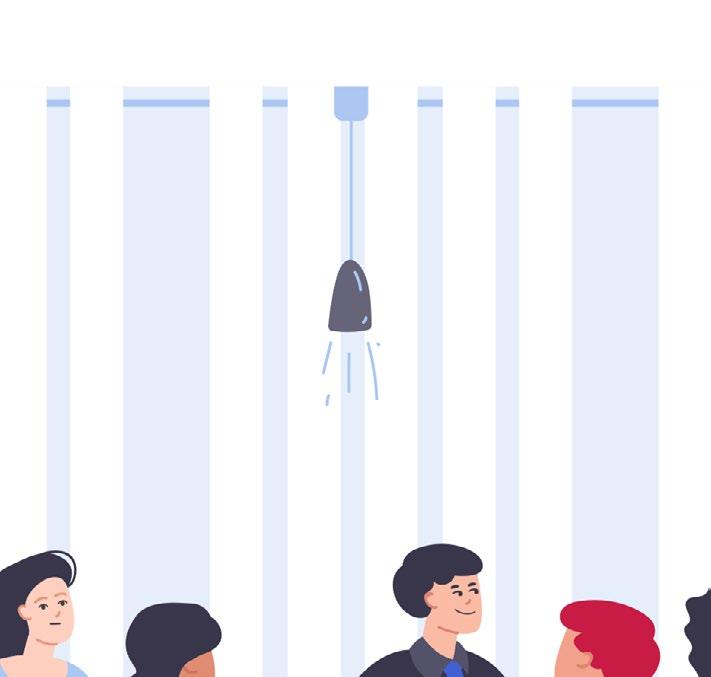

Assign roles to each attendee to cover a topic on the agenda or lead the meeting and shift those assignments every time. If the same person leads the meetings every time, it's hard to break down those dynamics. Switch it up and encourage every participant to speak.
Dov Breuer, COO, Fixlers
 Tory Gray, CEO & Founder, The Gray Dot Company
Tory Gray, CEO & Founder, The Gray Dot Company

13 Ways Leaders Are Addressing Imbalances Of Power In The Workplace Leadership Excellence presented by HR.com FEBRUARY 2023 27 Submit Your Articles
Write the Rules from the Same Foundations
The rules are for everyone, and that means everyone; there can be no failure to do this. Favoritism can only take root when the rules that govern apply differently to different people. As such, you need to create a vetted system of equal company policies that affect everyone within the scope of the business.
The rules and policies should go through several phases of revision in order to make sure that they are fair to everyone and affect everyone equally, no matter their position in or outside of the business. Of course, there will need to be some wiggle room for particular circumstances, but the foundations that everyone walks upon must be the same.
From that level field, you'll be able to competently decide when an exception needs to be made. In any other case, all members of the company should be expected to adhere to the same set of rules. Anything less can quickly turn toward favoritism and power imbalance.
Neel Shah, Founder, EZ Newswire

Stay Alert, Aware, and Available
As a leader, it's essential to do all you can to promote parity in the workplace. The first step in addressing any issue is to acknowledge the possibility that it exists. It's easy to get defensive, "that would never happen in my business."
The truth is, privilege and power imbalances can impact any workplace. Accepting that this can, and does, happen will enable you to spot the signs in your own organization. You can then use this awareness to inform your next steps.
As a leader, you set an example. This attitude also makes it easier for employees to approach you if they are experiencing problems related to power imbalances, prejudice, or discrimination. A willingness to bring these issues into the light and examine them objectively will help you to resolve them.
Putting clear policies and procedures in place is a proactive way to recognize that these issues might occur. Rather than wait for them to escalate, stay alert, aware, and available to address any concerns that arise.
Martin Gasparian, Attorney & Owner, Maison Law


13 Ways Leaders Are Addressing Imbalances Of Power In The Workplace Leadership Excellence presented by HR.com FEBRUARY 2023 28 Submit Your Articles
Brett Farmiloe is the Founder/CEO and currently, the CHRO of Terkel.io Would you like to comment?
Why We Choose The Wrong Leaders And How We Can Fix This
 By Celine Floyd, Cappfinity
By Celine Floyd, Cappfinity
Leaders who are confident, controlling, and hierarchical have always been popular throughout history, however, this often comes at a cost of not always being particularly well-liked by the public. In the modern work environment, it still seems like this type of leader has the ability to become incredibly successful, despite being viewed by many as brash. Adam Neumann and Steve Jobs both famously had a “my way or the highway” approach to managing that continues to inspire many.
While this type of leadership style can produce great results, it forces us to ask the questions: Why do we consistently choose these dominant types of leaders to run our companies, and what effect do they have on those who work underneath them? And as tech layoffs continue to happen and leaders are forced to make difficult decisions, it is crucial to evaluate the difference between a good and a bad leader, particularly in times like these.
TOP PICK Leadership Excellence presented by HR.com FEBRUARY 2023 29 Submit Your Articles
Take the time to identify new criteria that make leaders not only effective but productive, as well
Why Do We Choose These Leaders?
Research shows that when times are scary and ambiguous, people gravitate towards assertive leaders for a feeling of safety and security. While it may feel good initially to have that sense of protection, this type of leadership doesn’t end up serving you in the long term. As humans, we have a hard time seeing past the veneer of who someone is. While the majority of us would like to believe that we have grown out of our “choosing the bad boy” stage, the reality is that these types of leaders tend to have a kind of charisma that makes many susceptible to trusting them. Once we realize we are under their spell, it is usually too late.
What Makes a Good Leader?
An effective leader in the workplace instills trust in their team while also contributing to the department's overall growth through increased team productivity. Positive team leaders are born with certain qualities, such as compassion and integrity, or are able to acquire them through formal training and experience.
One can obtain leadership through dominance or prestige. Dominant leaders are assertive, confident, controlling, decisive, and intimidating. Many of these characteristics are positive; however, dominant leaders have been known to exhibit negative characteristics such as narcissism, aggression, and uncooperativeness. Such leaders may insist that
their way is the only way, or they may intimidate others rather than discussing, debating, or consulting with colleagues. This can have serious consequences for the businesses they lead. Leaders who are prestige-based are respected, admired, and held in high regard by others. They are not only competent in their own right, but they also pass on their knowledge and skills to others in their group. Prestige-based leaders also have traits that are deemed more likable such as warmth and compassion and are therefore more socially accepted than their dominant counterparts.
As layoffs continue to make headlines and managers are left with smaller teams, navigating how to lead groups of individuals during a time like this is crucial. It’s imperative to have a lot of communication up-front and let people on your team express how they really feel post-layoffs. It is also important to think of how you are going to reallocate work with a smaller team to ensure employees aren’t feeling burnt out by having to take on more work now that there’s less staff. Taking tasks that aren’t as important off of your team’s plate during a period of economic downturn also shows your staff that you are working with them through this. Now is also a great time to encourage internal mobility and allow team members to change roles and harness skills and strengths that they weren’t able to use in their current roles.
Why We Choose The Wrong Leaders And How We Can Fix This
Leadership Excellence presented by HR.com FEBRUARY 2023 30 Submit Your Articles
An effective leader will be one who is able to stay calm and carry on through the uncertainty while also thinking about their team collectively, rather than being focused on themselves.
The Effects of Poor Leadership
The ramifications of poor leadership in a workplace echo what we often see in politics. In the best-case scenario, a leader will come in and make a big impact, but over time they won’t end up delivering on their promises. In the worst-case scenario, these types of leaders embed a culture of toxicity that erodes trust within the workplace. Studies have shown that the behavior of CEOs and top management has a trickle effect on the rest of the organization.
According to a study conducted by Nankai Business Review, those in the middle of an organization are less likely to put in effort in their jobs when they have an ineffective leader. This often leads to inconsistent customer service and internal employee frustration. An ineffective CEO will negatively affect an entire organization from top to bottom, no matter how much it is prevented. For example, after Boeing fired CEO Dennis Muilenburg for mishandling the 737 Max crisis, internal communications from the company showed a company culture in disarray, with senior employees having little regard for their colleagues and customers. Without consistent and effective leadership, any organization is susceptible to falling apart.
Strategies for Assessing and Developing Leaders
Picking the right leaders to run your organization while ensuring you are nurturing their strengths and talents is challenging for any business owner. Utilizing skills-based digital assessments allows one to be more aware of the traits hiring managers should look for in a leader such as warmth, empathy, and compassion. Digital assessments provide a “portfolio of evidence” on skills, strengths, and talents, allowing selection teams to identify a great leader.
These assessments are also a great way for individuals to capture learnings and key insights they might not know about themselves yet. Rather than
looking outside of the organization to fill leadership roles, HR can utilize assessments to support succession planning by seeing who in their current pool of employees would be a fit to take on a bigger role. They also provide supplementary, unbiased information about potential candidates and are critical when it comes to assessing and developing good leaders.
While dominant leaders will always be popular, it is important for us to take the time to identify new criteria that make leaders not only effective but productive, as well. Having a good leader ensures that everyone in your organization is aligned and working towards a common goal. This leaves little room for employee frustration and allows companies to build a strong company culture.
Celine Floyd is the Director of Leadership Assessment at Cappfinity, focused on supporting clients to engage, transform and empower their Executive Talent. Celine has an MSc in Occupational Psychology, is a member of the British Psychology Society and a Chartered Occupational Psychologist. Her specialist expertise is in the evaluation of leadership capability and potential, in service of recruitment, internal mobility, team formation, succession planning, talent mapping and leadership bench-strength testing. As an advisor to CEOs, CPOs and CHROs, typically of international corporations, she is passionate about authenticity, agility, inclusion, technology, social mobility and modernity.
Would you like to comment?

Why We Choose The Wrong Leaders And How We Can Fix This Leadership Excellence presented by HR.com FEBRUARY 2023 31 Submit Your Articles
HRCI® & SHRM® CERTIFICATION PREP COURSES
GROUP RATES AVAILABLE
For HR Professionals
Show that management values the importance of the HR function, and has a commitment to development and improvement of HR staff.
Ensure that each person in your HR department has a standard and consistent understanding of policies, procedures, and regulations.
Place your HR team in a certification program as a rewarding team building achievement.
For Your Organization
Certified HR professionals help companies avoid risk by understanding compliance, laws, and regulations to properly manage your workforce.
HR Professionals lead employee engagement and development programs saving the company money through lower turnover and greater productivity and engagement.
A skilled HR professional can track important KPIs for the organization to make a major impact on strategic decisions and objectives, including: succession planning, staffing, and forecasting.
HR.com/prepcourse CALL TODAY TO FIND OUT MORE 1.877.472.6648 ext. 3 | sales@hr.com
1 Less expensive than a masters or PhD program, and very manageable to prepare with
2. legislation and best practices
3. Recognized, Industry benchmark, held by 500,000+ HR Professionals
Group Rate Options
We offer group rates for teams of 5+ or more for our regularly scheduled PHR/SPHR/ SHRM or aPHR courses.
For groups of 12+, we can design a more customized experience that meets your overall length of the course.
Groups rates for HRCI exams are also available as an add-on.
All group purchases come with 1 year of HR Prime membership for each attendee to gain the tools and updates needed to stay informed and compliant

CALL TODAY TO FIND OUT MORE 1.877.472.6648 ext. 3 | sales@hr.com | HR.com/prepcourse
1 2 3
Why Understanding Existing Value Systems In The Workplace Makes For A Seamless Leadership Experience
 By David Mugun, Business Person's Mentor Limited
By David Mugun, Business Person's Mentor Limited
Let’s first get over and done with definitions so that we enjoy a seamless reading experience.
The term Value System(s) is/are - A hierarchy of values that all moral beings have reflected in their choices. Said differently, Value System(s) is a set of individual values which exist in a scale or a hierarchy that reveals their degree of relative importance.
Most people’s value systems differ as we all rank things differently. Examples of values include individually determined values, culturally determined, and institutionally determined values. Individually determined value systems rank things such as altruism, courage, gratitude, and dependability as important. Culturally ranked values could include etiquette around greetings, orientation to time, stereotyping, and individualism versus collectivism. Institutional value systems include the need for punctuality, pecking order norms, a sense of quality work delivery, and being considerate around
stakeholders, be they, colleagues, shareholders, or customers.
Leadership Excellence presented by HR.com FEBRUARY 2023 34 Submit Your Articles
Leaders should incorporate a values disclosure session into onboarding programs
Within the workplace, people from all backgrounds, cultures, races, and geographically determined experiences, converge to work under one command. It is possible that everyone will be on the same page but certainly not in the same paragraph or sentence. These differences are sure to pose challenges across the workforce. It is not enough for a good leader to acknowledge them but to also understand how to step in the gap when they come in the way of work execution or relationships.
Two men at work, James, an international colleague on his overseas tour of duty, and John became very close. The plutonic bond strengthened when John took James home for lunch. Sally, John’s wife was glad to host but became apprehensive when she learned that for his second visit, James would have to choose whom of his two wives would accompany him. Sally was concerned that such a visit would violate her one-man-one-woman marriage values and even worse, encourage John to consider finding another partner to match James’s two. John sensing tough times ahead decided to keep the camaraderie within the office.
see him miss out on nothing at all. Pleas for him to consider other times fell on deaf years. But a 360 work appraisal session uncovered this anomaly and the team leader’s boss asked him to change the weekly meeting time to one agreed to with his team. This is a classic case of management versus leadership.
Leadership and management are two distinct creatures. Management has more to do with controls and getting people to conform to the manager’s desirable conditions. Leadership has more to do with inspiring people to deliver. Whereas, leaders must manage teams and they have a bigger role in keeping them motivated so that unnecessary interruptions don’t occur, lest objectives are missed by a mile.
When Sally went to work (a different organization from John’s), she spent an hour talking to colleagues about her disapproval of John’s friendship with James. She shared her worries about the unwanted practice possibly infecting John. She could not fathom playing co-wife to someone else. A culturally approved choice from another geography was now causing low productivity at an unrelated workplace. Peter, Sally’s boss called her to his office and agreed to have a word with John. In the meantime, he asked her to get back to work as she was one of his most valued employees. Leaders must learn to manage situations brought about by foreign value systems. John gave Peter his word that he was strictly a oneman-one-woman marriage person.
Elsewhere, the leader of a team working across different time zones and geographies picked an online meeting time suitable to him. The members were uncomfortable with the timing as it badly affected their schedules. For one guy this coincided with his soccer practice, for another guy, the meeting time kept him away from the special weekly dinner date with his wife and for a third person, the time prevented her from doing homework with her son who needed to sleep early in order to awaken fresh and ready the next day for another busy day at school. An adjustment on the leader’s end would
To better manage value system differentials at work, the leader ought to incorporate a values disclosure session into onboarding programs, where existing and new staff disclose their irreducible minimums to one another. Any disturbances noted arising from disclosures get known and hence managed at that moment. Any stereotypes consistent with certain cultural groups also get clarified and henceforth harmony is achieved at the earliest possible moment. Malcolm Gladwell, in his book, Outliers talks of Korean Air’s disasters of the 1990s. The airline had underlying value issues. It no doubt is easier now to see where leadership was needed. Here is the story.
Why Understanding Existing Value Systems In The Workplace Makes For A Seamless Leadership Experience
Leadership Excellence presented by HR.com FEBRUARY 2023 35 Submit Your Articles
Concerned leaders should make it mandatory for all colleagues to understand the value systems within a diversified workforce.
In the nineties, Korean Airlines, now Korean Air, experienced nasty plane crushes with its Boeing fleet.
After numerous investigations, a leaked audit report revealed that a high level of laxity within its crew was the major culprit. The planes were flawless and the Korean crew underwent the same training as the crew from other airlines that flew Boeing planes. The Captains were often senior in age to the First officers. The first officers in the Korean culture could not question these Captains in much the same way that their peers from other airlines could and did all the time. Korean culture forbids juniors from questioning seniors in ways that would be viewed as insubordination.
So even in crucial moments when all the other crew knew that things were not right on board, the pilots, many times tired because of the quick turn-around between flights, often missed out crucial details which in one particular case, resulted in a plane that had run out of fuel not getting the control tower staff to understand what was actually happening to the plane. First officers are there partly to help out during such moments when a tired captain clearly needs help.
The first officer, in a soft respectful tone, informed the pilot of the fuel situation and the pilot relayed the same information to the tower only that, it was received as a ‘by-the-way’ communication. So it sounded like they could circle the air a few more times to allow those who had communicated better to land. The pilot was also submitting to the authority of the control tower more in line with Korean cultural practices, than by airline standards that demand assertiveness during such troubling moments.
Because of their soft-spoken nature, when submitting to authority, the control tower staff kept them circling as other planes got the nod to land. The Korean plane lost power on two engines and could no longer carry its own weight.
In the black box recordings that were retrieved, the automatic altitude alerting mechanism’s voice
could be heard warning the crew at 500 feet and progressively to 20 feet then a loud bang is heard and death thereafter. For the crew in the cloudy approach, they never realized that they were now 20 minutes from the runway and the loss of altitude detection, was actually how far they were from the high hills beneath them and their final crash site.
After investigations, it was decided that the first officers could take over the plane when in their judgment, the captain was wrong about the situation. This retraining got the airline back to a safe carrier and has maintained that reputation to date. What was viewed as laxity of the crew was actually the stretched role played by culture beyond the confines of its usefulness, and crossing the red line to endanger air safety. Market, revenues, lives, confidence, assets, and much more were lost.
The Korean cultural practice had taken away the role of the first officer who by training is just as good as the captain. They needed to overcome the traditional culture ‘bug’ that was not useful in aviation culture.
Concerned leaders should make it mandatory for all colleagues to understand the value systems within a diversified workforce.
David Mugun is the Founder of Business Person's Mentor Limited. David is a management consultant with 27 years of experience gained in ICT, Insurance and Banking, business education, and private practice. He is the author of 10 books, all available at amazon.com. Would you like to comment?

Why Understanding Existing Value Systems In The Workplace Makes For A Seamless Leadership Experience
Leadership Excellence presented by HR.com FEBRUARY 2023 36 Submit Your Articles
References – The Korean Air story is mostly taken from the book Outliers by Malcolm Gladwell.
How You Can Improve Your Performance As A Boss
6 steps to follow
By John Tschohl, Service Quality Institute
















































































































































If you asked your employees to rate you and your performance as a boss, how do you think you would do? Probably not as well as you would like. Why? Because, for most of us, it’s easy to critique and criticize others while ignoring our own shortcomings.












Most bosses have been promoted to their positions without having any training in how to manage people.
That lack of training is a roadblock to motivating and retaining employees. Studies show that most employees leave their jobs not because of money but because they don’t like or respect their bosses. And, when you have to replace them with new people, you incur the cost of training them. So, if it’s the bottom line that concerns you and your company, you’d do well to pay attention to how you manage your people.
Leadership Excellence presented by HR.com FEBRUARY 2023 37 Submit Your Articles
How can you improve your performance as a boss?
Take these six steps:
Make employees feel wanted, needed, and valued When they feel that, they will also feel secure and supported. They will work better with their customers and coworkers. They will make more empowered decisions. And they will be unafraid to take risks. Consistent and continued training and professional development will help your employees refine their skills, discover new areas of interest, and boost their self-esteem and confidence to exceed expectations.
Communicate. It’s imperative that you communicate with your employees and that you do so honestly and openly. Let them know what you expect of them and ask what you can do to help them accomplish their goals. Too often, the only time bosses communicate with employees is when they point out a negative. It’s much more important to identify what your employees are doing right—and to recognize their achievements—because doing so motivates them to do more, to do better.
Be a coach. Provide employees with the training and tools they need to do their jobs. If you were coaching an athletic team, you would make sure your players had the proper equipment and training to help them perform well. You would also have a game plan that brings team members together in working toward a common goal: success. An effective coaching strategy is not one-size-fits-all. The most successful coaches in any industry know that they need to adjust their styles on a per-employee basis to get the most out of everyone.
Identify each employee’s unique skills and personality traits. Once you understand your employees, their strengths, their skills, and what they desire, you can work strategically to position and motivate them to perform at their best. Let your employees know that you are invested in them and in seeing that they succeed.
Provide constructive and goal-oriented feedback. Give employees in-person feedback that is timely, objective, specific and knowledgeable, and direct and
detailed. That feedback is the most important way you can affect employee performance. Address both what employees are doing well and where they could be doing better. Then work together to develop a plan that will get them where you need them to be in their performance.
Do what you say you are going to do. Delivering on your promises—whether it be instituting a new training program or scheduling a one-on-one meeting—shows employees you value them. It also increases their loyalty to you and your company. When you keep your promises, it builds trust. If your employees don’t trust you, they won’t do well with you.
As a boss, your goal should be to create an environment where your employees understand that you are there to serve them. You are there to provide them with the resources they need to do their jobs well and succeed.
John Tschohl is the Founder and President of the Service Quality Institute —the global leader in customer service—with operations in more than 40 countries. He is considered one of the world’s foremost authorities on all aspects of customer service and recently released his latest book, “Relentless.” John is also the author of Coaching For Success , a training program that teaches managers and supervisors how to coach and motivate employees.
Would you like to comment?

How You Can Improve Your Performance As A Boss
Leadership Excellence presented by HR.com FEBRUARY 2023 38 Submit Your Articles
VIRTUAL EVENTS
The State of Human Experience in the Workplace
The Future of Upskilling and Employee Learning
February 15-16, 2023
February 22, 2023
Solving for Today’s Workforce Shortages
February 23, 2023
View our Upcoming Virtual Conference Schedule and Register Today!
WEBCASTS
WEBCASTS
Engage, Connect, Inspire your teams: a Roadmap for Leaders
Living Our Values Every Day - How Leading Companies Build Cultures of Employee Appreciation
Elevating the Employee Experience in 2023: Why Engagement, Wellbeing, and Culture Are Key
Culture, Connection and Belonging in the New World of Work
Busting Myths of Talent Assessments
February 8, 2023
AM -
February 14, 2023
PM -
February 15, 2023 2:00 PM - 3:00 PM ET
February 16, 2023
AM - 12:00 PM ET
February 21, 2023
PM - 1:00 PM ET
View our Upcoming Webcasts Schedule and Register Today!
VIRTUAL EVENTS & HR.COM WEBCASTS UPCOMING
www.hr.com/upcoming_webcasts www.hr.com/virtualconferences
1:00
REGISTER
2:00 PM ET
11:00
12:00 PM ET
REGISTER
12:00
11:00
REGISTER
REGISTER REGISTER REGISTER REGISTER REGISTER
Thank you for partnering with us!
THANK YOU
Circa provides OFCCP compliance management and recruiting technology solutions to deliver qualified candidates on a level, equitable playing field for organizations.
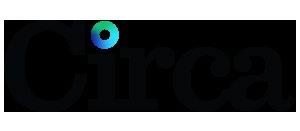
Designing better ways to work by providing cutting-edge products and exceptional experiences within HR, Talent, Time Management, Benefits and Payroll.

LEARN MORE PARTNER WITH US
LEARN MORE


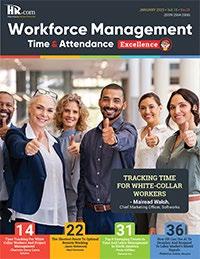



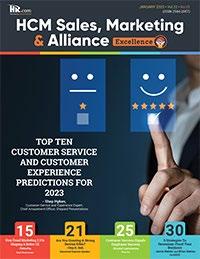

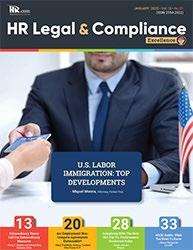
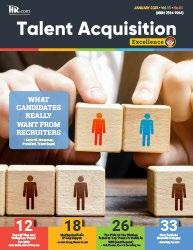



Like to submit an article? Use our online submission form or for more information go to www.hr.com/ExcellencePublications Publications 13 Targeted Publications to Reach Your Audience Informing, Educating, Enlightening and Assisting HR professionals in their personal and professional development, the Excellence series offers high-quality content through the publications!

For more information: Phone: 1.877.472.6648 | Email: ePubeditors@hr.com | www.HR.com/epubs Leadership Excellence February 2023




























 - Lisa Reinhardt, Senior Manager of Learning and Organizational Development, The CCS Companies
- Lisa Reinhardt, Senior Manager of Learning and Organizational Development, The CCS Companies
 - Celine Floyd, Director of Leadership Assessment, Cappfinity
- Celine Floyd, Director of Leadership Assessment, Cappfinity
 Debbie Mcgrath Publisher, HR.com
Babitha Balakrishnan Editor, Leadership Excellence
Debbie Mcgrath Publisher, HR.com
Babitha Balakrishnan Editor, Leadership Excellence









 Jonathan H. Westover, Ph.D., MPA, SFHEA, AFCIPD Chair/Professor | Organizational Leadership Academic Director | Center for Social Impact Faculty Fellow | Center for the Study of Ethics Utah Valley University
Jonathan H. Westover, Ph.D., MPA, SFHEA, AFCIPD Chair/Professor | Organizational Leadership Academic Director | Center for Social Impact Faculty Fellow | Center for the Study of Ethics Utah Valley University






 Ryan Gottfredson, Ph.D.
Consultant/Trainer/Speaker/Coach Assistant Professor - California State U. Fullerton
Ryan Gottfredson, Ph.D.
Consultant/Trainer/Speaker/Coach Assistant Professor - California State U. Fullerton








 By Justin Reinert, Performance Accelerated Learning
By Justin Reinert, Performance Accelerated Learning


 Becoming an accessibility ally!
Becoming an accessibility ally!


 By Lisa Reinhardt, The CCS Companies
By Lisa Reinhardt, The CCS Companies






 Linda Shaffer, Chief People Operations Officer, Checkr
Linda Shaffer, Chief People Operations Officer, Checkr


 Grace He, People & Culture Director, teambuilding.com
Grace He, People & Culture Director, teambuilding.com







 Tory Gray, CEO & Founder, The Gray Dot Company
Tory Gray, CEO & Founder, The Gray Dot Company




 By Celine Floyd, Cappfinity
By Celine Floyd, Cappfinity


 By David Mugun, Business Person's Mentor Limited
By David Mugun, Business Person's Mentor Limited

















































































